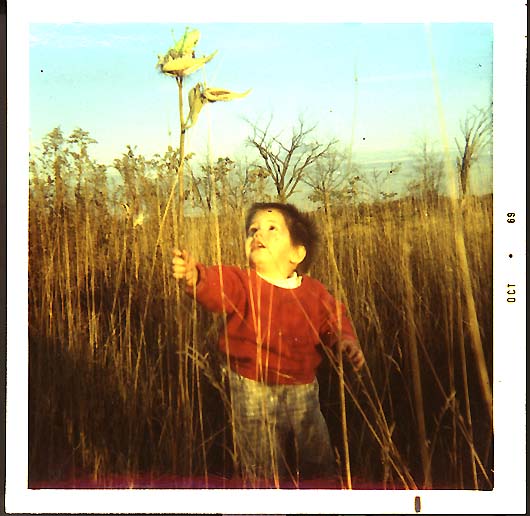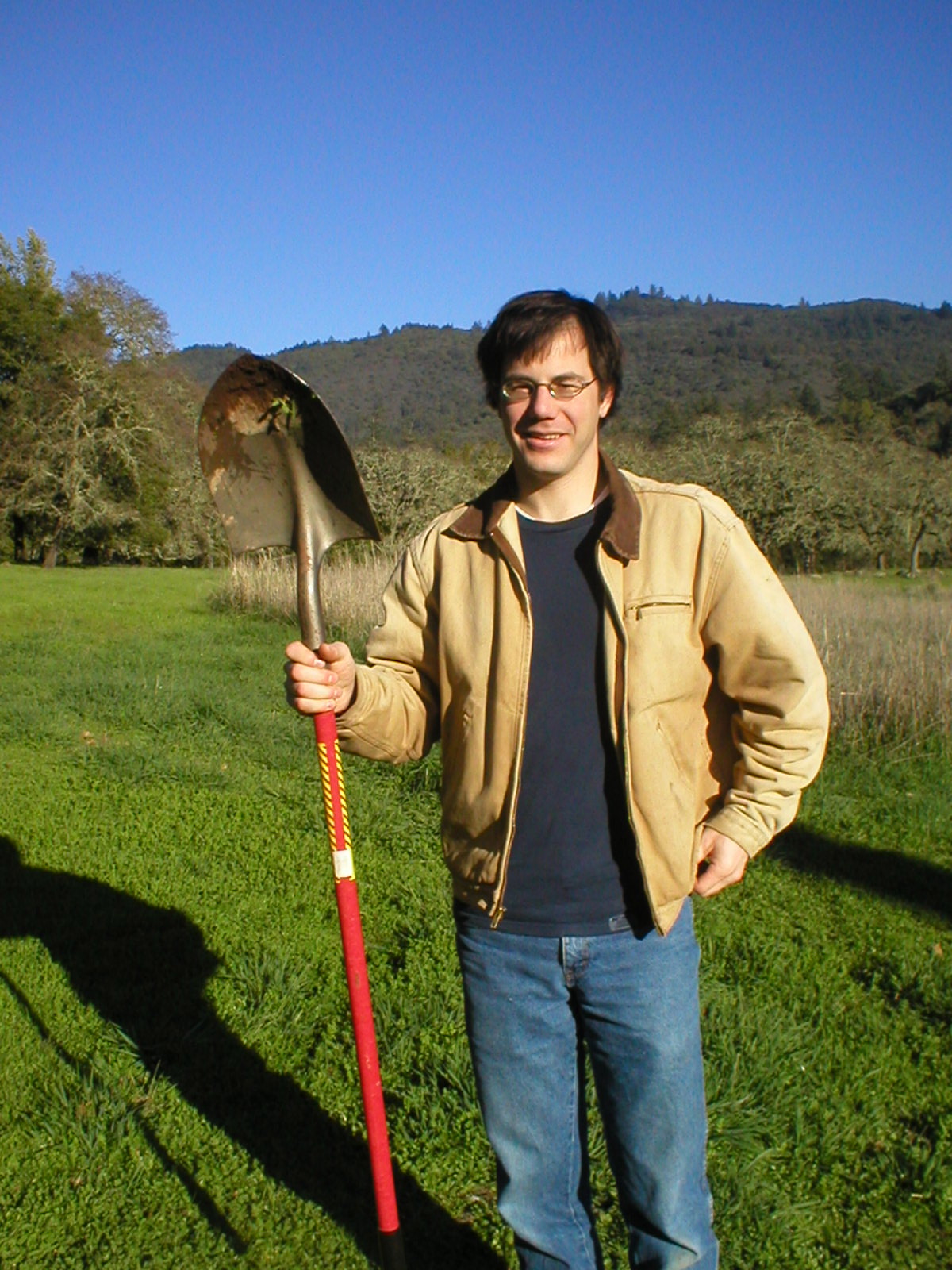Daniel Gluesenkamp, Ph.D.
If you have a chance to be in Dan Gluesenkamp’s orbit, you will experience someone with a stunning passion for plants. A brilliant orator, he has the ability to paint a vibrant picture of his conservation dreams. Perhaps even more important, he will leave you with a great sense of hope. We feel lucky to have him leading the California Native Plant Society and are pleased to recognize him as our January 2020 Conservation Champion.
When did you first fall in love with plants?
I guess I’ve always been in love with plants; in one of my earliest family photos I’m foraging for milkweed with my dad. I distinctly remember getting thrilled with plants as a 5-year old, learning that I could tear up Tradescantia stems, plant them, and make more plants. Now that is an epiphany moment! I know I fell in love with California native plants when I was an undergrad at the University of California at Santa Cruz. I remember the exact moment, discovering a Calochortus blooming on a road cut, in absolute darkness but for a shaft of light lancing through the redwood canopy that lit up a single ghost-white blossom. That was it for me. I fell in love.
What was your path to becoming executive director of CNPS?
Well, I guess it all started with that blossom! A few weeks later, I randomly found myself in the Santa Cruz Natural History Museum, where the local CNPS chapter was holding a wildflower show. I’d never heard of CNPS, and knew nothing about plants. I found my Calochortus, and names for other plants, and I remember the “aha” moment when someone explained that some were native and some weren’t, some were rare and some were weeds, etc. After college I did fieldwork for a few years, and then got myself into school, determined to become a conservation biologist. After earning my Ph.D. I chose to ditch the academy and spent a decade doing natural lands management, saving places and restoring them. While I loved the local, I also recognized the need for larger-scale work. I did a stint as Executive Director of the Calflora database, and then when the CNPS job came up my wife convinced me that it would be perfect for me. She was right of course! It’s a great organization and I’m thrilled to be able to be part of it.

What about working with rare plants has surprised you?
I think the first surprise for me was that rare plants are so common! I’m in California, where we’ve got more plants than any other state, and actually more rare plants than most states even have plants. In California, rare oftentimes means local. A rare plant may only have two or three populations, but it might only have ever had two or three populations for its entire history. This is something that isn’t widely appreciated –rare does not mean it’s on its way to extinction, it mostly just means it is special. Another surprise, kind of a corollary of that, is that these things have incredible life force. We think of a rare species as something very delicate, a weak creature that needs our intervention, all that kind of self-serving hubris. Truth of the matter is, our 2500 rare plants have been hanging on in California far longer than we have, most of them will outlive us and even our species. All they really need from us is to not be bulldozed.
What has been the most challenging aspect of your work?
We have met the enemy and they are us. We need to work together more, faster, more creatively, with planning but also with realization that we have to take risks and have faith that some of our bets will pay off. We’re already doing incredible biodiversity work, but we are disparate and disconnected, a Tower of Babel. We have the opportunity, right now, to do everything we ever dreamed of, and all of society is urging us forward and hoping we succeed. The biggest challenge is for us, the people who can make it all work, to believe that this opportunity is real and work with a fervor commensurate with the need.
What excites you most about the Biodiversity Initiative for California?
I’m excited that the ambitious new California Biodiversity Initiative has the potential to restructure the way we live in California, and in doing so teach the rest of the world. It literally can change everything. Once, wetlands were where you dumped your trash until it was dry enough to build on. A generation ago Americans started fighting to save those places, secured laws to protect them, and ultimately changed public perception so that wetlands are now protected by cultural norms. We are at a moment where we are doing this for biodiversity. With this initiative we are bringing everybody on board, not just to do the science and reform policy and law, not just to show that saving biodiversity is a win-win action that actually grows the economy while increasing resiliency, but to actually update the culture so that future generations all understand biodiversity as sacrosanct and its protection is just assumed. In order to get there we are going to do all of the science that we should have been doing over the last few decades, we’re going to reboot natural history collections, train hundreds of scientists and thousands of para-taxonomists. We’re going to engage all Californians to get the work done and to turn them into champions who share this vision with their families, neighbors, abuelas and bowling buddies.
What new projects or approaches are you most interested in that could help conserve California plants into the future?
This year we are advancing a lot of things, and personally, I am quite excited for the Biodiversity Survey: a decade-long specimen-based survey of California. Over the last century, we have divested from biodiversity work, defunded natural history collections, failed to invest in new taxonomists, and let that key infrastructure deteriorate. Now we are finding that we need it. We have incredibly smart computers that can do great things with data, but we are using data that was collected a century ago. So we are going to update that. It will be an all-hands-on-deck effort, bringing together all of our taxonomists, training more, fixing existing museums and building new ones, and most of all engaging many thousands of Californians who no one ever expected would be conducting cutting-edge biodiversity scientists. At the end of it we will have the information we need, we will have secured the specimens that future generations give thanks for, and we will have nurtured a much larger community of biodiversity champions that looks very different from the smaller community that got us this far.

